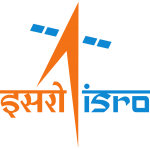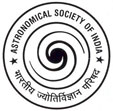December 2018:
The AstroSat Picture of the Month for December 2018 presents the Ultra Violet Imaging Telescope itself. A schematic of the design of the UVIT is shown on the top left, and a photograph of the two UVIT telescopes is in the top right. An image of the fully assembled UVIT, containing both telescopes sitting snugly together, wrapped in insulating foil, waiting to be integrated into AstroSat, is shown at the bottom. The Indian Institute of Astrophysics, the Inter-University Centre for Astronomy and Astrophysics, and the Canadian Space Agency developed the UVIT.
Picture credit: ISRO, UVIT Team


“AstroSat Picture of the Month” is an initiative of the Public Outreach and Education Committee of the Astronomical Society of India and the AstroSat Training and Outreach Team.
UVIT – the bright star in the galaxy of UV telescopes in the sky
Over the past few months, we have brought you many images taken by the Ultra Violet Imaging Telescope (UVIT) on the AstroSat. Don't you think it is time you met the famous UVIT itself? UVIT is a pair of telescopes that has a unique place in the ensemble of ultraviolet telescopes. Let us tell you why.
Though the optics of an ultraviolet telescope is similar to the commonly found optical telescopes, the shorter wavelength of UV demands certain special modifications. UVIT is made of a pair of very similar telescopes, each of which has a 37.5 cm diameter mirror, specially coated to make it highly reflective in the UV. In one of them, the light is split into two beams of different wavelengths, one of which goes into a detector for visible light, and the other into a detector for the Near UltraViolet (NUV, 200-300 nm). The other telescope is solely for the Far UltraViolet (FUV, 130-180 nm). Astronomers can also isolate just a narrow range of wavelengths within the NUV and FUV light by choosing specific filters before the light hits the detector. There is a diffraction grating as well, that can disperse the UV light into a spectrum.
The detectors are places where things get more interesting. The NUV and FUV detectors are photon counting devices and can respond to each individual UV photon. These are capable of measuring the time of arrival of every single photon to an accuracy of 2 milliseconds! The signal from these photons are then amplified before they fall on the 0.25 megapixel CCD cameras. This design makes the UVIT very sensitive, and objects very bright in the UV can also permanently damage the detectors. Because of this, the UVIT is only operated when the Earth hides AstroSat from the Sun. In addition, UV light reflected from the Earth is quite strong and hence the UVIT is never pointed towards us. There are a number of additional built-in safeguards that protect this instrument from any ultraviolet glare that may strike it.
How does the UVIT, with its special design, compare with other UV telescopes in space? Its field of view is about 0.5 degree (i.e., the size of the Moon). This is 80 times larger than that of the Hubble Space Telescope, and about half as much as that of the Galaxy Evolution Explorer (GALEX) of NASA. Although the UVIT's resolution of 1.4-1.7 arcseconds is poorer than the HST, it is much better than the 5 arcseconds resolution of GALEX. Hence, UVIT's uniqueness lies in its ability to image a large field of view combined with its superior resolution. This makes it a remarkable telescope to study large galaxies and galaxy clusters in fine detail, as well as look into the crowded centres of star clusters in our own Galaxy. Since the energy of UV photons is more than that of visible light photons, UVIT has been used extensively to study hot stars, both young and old, as well as final stages of these stars, allowing astronomers to peek into the ultraviolet sky as never before.
Click here for the entire APOM archive
More about ASTROSAT
AstroSat, India's first dedicated multi-wavelength space observatory, was launched by ISRO on 28 September, 2015. It has five instruments on board – the Ultra Violet Imaging Telescope, the Soft X-ray Telescope, the Large Area X-ray Proportional Counter, the Cadmium-Zinc-Telluride Imager and the Scanning Sky Monitor.
Get answers to your common queries about ASTROSAT in English, in हिंदी, and in मराठी.

